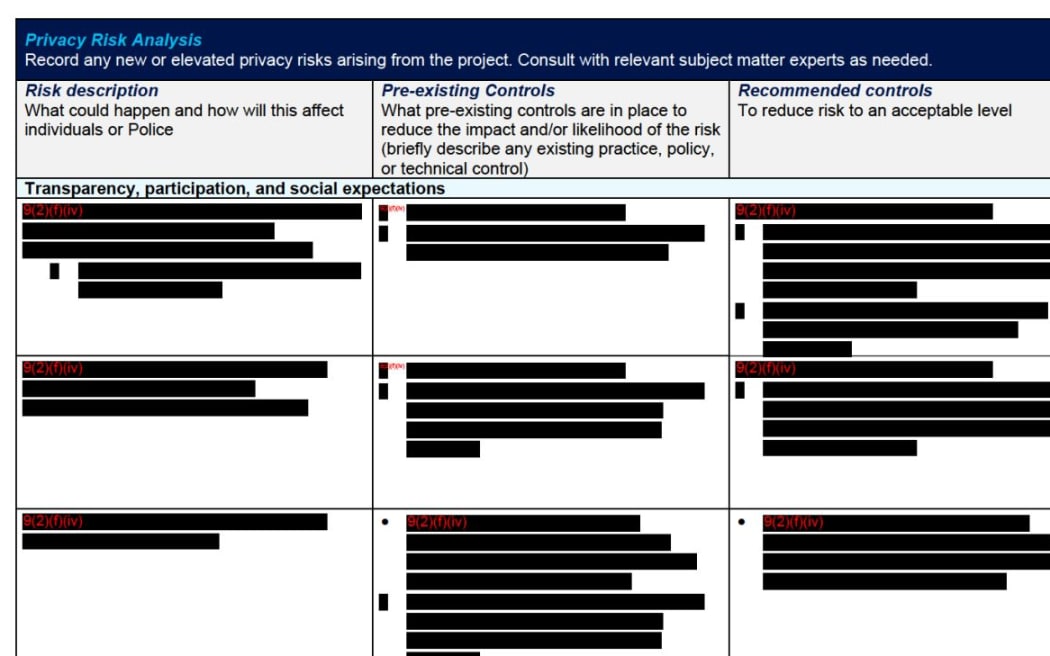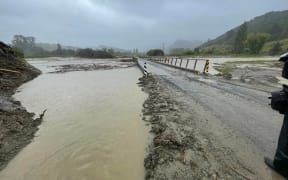
Photo: Supplied
Analysis - How much is the taxpayer entitled to know?
The bits kept in, and the bits excised out of, the 26,000 Official Information Act responses from 99 public agencies this year can be revealing, suggesting how many lawyers were in the room when they were signed off.
Journalists open up OIA responses daily, hoping there will be a choice story to tell.
It can be like a good opening on Christmas Day - or a game of Blankety Blank.
The following three mix it up.
Blank one
This week, police sent through to RNZ under the OIA a copy of their privacy impact assessment into a new public reporting system meant to nip terrorism or violent extremist threats in the bud.
The document is an early-days analysis of the risks to privacy when it is really uncertain where the bar for behaviour that sets off alarm bells at state agencies should be set.
An earlier Cabinet paper said it was "essential to ensure that the system is transparent".
One section of the newly released privacy impact assessment headed 'Transparency, technology and social expectations', says "there will need to be clear communication with the public about what information they can be report it will be".
That is one of the few unredacted bits.
A section headed 'Collecting, using, disclosing or sharing information respectfully and fairly' is totally blanked out.
So are the five pages of risk analysis at the end.
Agencies have to give a reason under the OIA law for withholding information. Police decided most of the 17-page privacy assessment should be blackened out to protect confidential advice, section 9(2)(f)(iv).
They will be doing a second privacy assessment once they've designed the system. Will that fall foul of 9(2)(f)(iv), too?
Blank two
What about the country's national security strategy in outer space? What could we find out about that using the OIA?
About a fortnight ago, an OIA response on this came in from the Ministry of Business, Innovation and Employment.
While "national security" is often cited by officials as a reason to clam up, following the 2019 mosque attacks which exposed the weaknesses behind the veil, a new strategy was published this year that responded to the challenge to the government "to develop a new conversation with New Zealanders about the national security challenges we face".
It was about "fostering a public conversation" and being "clear-eyed on risks", it said.
The conversation about space strategy began promisingly. Under the heading 'New Zealand Space Agency material', the OIA response stated:
"There are nine documents in scope of the request that capture the contributions of MBIE. These documents, and our decisions about their release are contained in Appendix B."
But Appendix B was headed 'Withholding grounds'.
It listed nine documents; it said "Withheld in full" several times; it said discussion drafts that contributed to the public-facing online strategy document were also withheld. It cited, not OIA 9(2)(f)(iv), but section 9(2)(g)(i) that protects opinions by, between or to ministers and agencies.
"In the case of space security in particular, I note that MBIE's Space Agency is the only conduit to discuss national security matters relating to space, and therefore there is no other avenue to obtain this information," the ministry's general manager of data, insights and intelligence told RNZ.
"I consider there is a real risk," the manager went on, "that releasing the draft comments would likely impact this avenue for advice and damage the overall quality of future advice if officials were not protected in providing free and frank advice."
A single avenue, and it was blocked.
Blank three - unblanked
Finally, health, with an example that shows how blankety-blank can go wrong.
A 140-page OIA from the then-health minister mid-year about building hospitals, came in two parts: one blanked-out, and one not blanked out, so you can compare the two directly and see what you are not meant to know.
The back half of the OIA was full of redactions.
This version was the only one RNZ was supposed to get.
For instance, a section headed 'Health Capital Envelope' had all the sums blanked out.
The public was not meant to know there was $4.495 billion of hospital projects in the 'envelope' they were paying for, or know about a "funding shortfall" of $171.3m.
A 'Commentary on red rated projects' that ran to eight pages and 15 projects, collectively worth hundreds of millions of dollars, was entirely blanked out.
The public was not meant to be privy to how Palmerston North Hospital's refurb of old, cramped and sometimes unsafe spaces "remains in red due to escalating costs and construction timeline slippages".
Or even know which 15 projects were in the red.
Why? Section 9(2)(g)(i) again, along with a bit of 9(2)(b)(ii) - to avoid prejudicing "the commercial position" of someone.
What are you entitled to know, and what aren't you? We know a bit, but not a lot.







